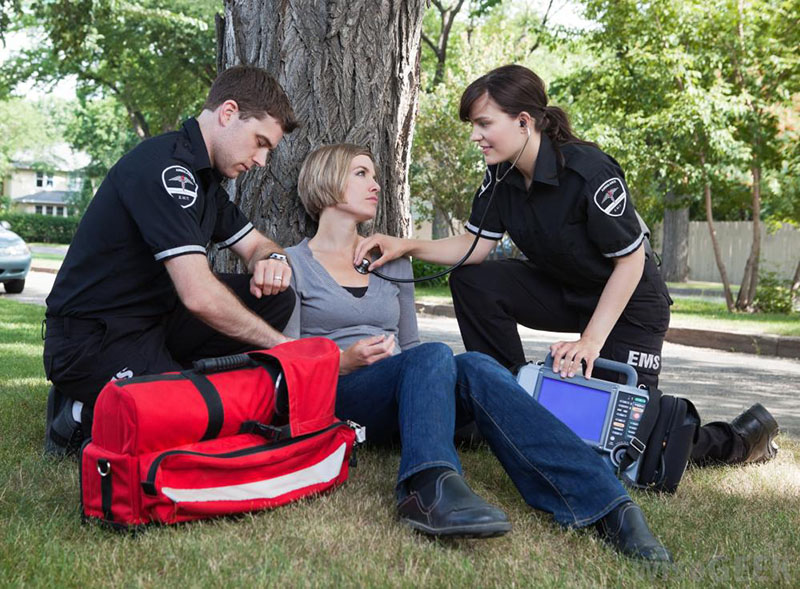The field of emergency medical services is a vital one, and a career in it can be extremely rewarding. It’s about saving and providing life-saving care. If you’re contemplating becoming an Emergency Medical Technologist (EMT) or moving up to the esteemed job of a paramedic then you will be entering an industry with tremendous potential for growth and a high demand for highly skilled professionals. This article will walk you through the steps of becoming an EMT or paramedic, and will help you explore the various training options that are readily available.
Understanding the role and function of EMTs and Paramedics
Emergency Medical Technicians Also known as paramedics or EMTs are the initial responders to emergencies. They offer immediate assistance. They are specially trained to assess and provide treatment to patients, and transport them to medical facilities to receive additional treatment. Paramedics and EMTs play a essential role in stabilizing patients during crucial moments, taking split-second decisions and providing compassionate care in times stress. For more information, click Steps to become a Paramedic

Step 1: Become an EMT:
You must complete the education and training program as well as the required education and training program, which can vary based the certification level you want to attain. There are three levels to EMT Certification exist:
1. EMT Basic (EMT B) It is an entry-level certificate that needs between 100 and 150 hours of training. EMT-Bs are certified to provide basic medical care which includes CPR and bleeding control as well as basic airway management.
2. EMT Intermediate (EMT I): EMT I requires an additional level of training, which may differ from state to the state. In some areas this level is combined with EMT-B. In other states the range of training is from 200-400 hours, which includes advanced medical expertise as well as intravenous therapy and other expanded skills.
3. EMT-Paramedic (EMT-P) EMT-P: The top grade of EMT certification, EMT-P requires extensive training, typically lasting around 1,000 to 1,800 hours. Paramedics can carry out advanced medical procedures such as administering medications, interpreting EKGs and advanced airway management.
Step 2: Obtaining Paramedic Certification:
You must complete the EMT B or EMT I stage before you can be a paramedic. After that, you’ll be eligible to enroll in the paramedic training course, which usually takes from one to two year to complete. Through the rigorous training, you’ll study the latest medical issues. In addition, you’ll acquire the necessary knowledge and skills to handle difficult circumstances.
Step 3. Examining EMT Training Options:
When it comes to EMT training, you have many options dependent on the level of certification that you are aiming to attain. Community medical trade schools and colleges often provide EMT training for all levels of certification. The courses offer a mixture of classroom education along with hands-on education and experience on the job and in clinical environments.
In addition, if you’re looking for a deeper and comprehensive EMT program that leads to a degree, universities and colleges could offer EMT education at the EMT-Paramedic level. These programs offer a more comprehensive understanding of emergency medical services, giving an understanding of medical decisions and patient care.
Step 4: Ensuring DSHS is approved EMS Training:
If you’re aspiring to become an paramedic or EMT, it’s crucial that the course chosen by you be DSHS-approved. The Department of State Health Services also known as DSHS accepts EMS Training Courses to ensure an excellent training. By enrolling in a DSHS-approved EMS training will ensure that you get top-quality training and that you meet the requirements for certification.
The profession of EMT or paramedic can be an extremely rewarding and prestigious career option. EMTs and Paramedics are first responders that play an essential function in providing immediate medical treatment in emergency situations. In order for those who want to become EMTs or paramedics, to get started on the life-saving process they must finish all the necessary education and training programs. The EMT certification course can be completed at a community college, medical trade school, or university, depending on the degree of certification that is desired.
When assessing the various training options You should also make sure that the EMS course is DSHS certified. This will ensure you are receiving a quality education that is up to the requirements required for EMT certification and paramedic accreditation.
As the demand for qualified emergency medical professionals continues to rise making it a great time to enter the field of EMS can provide a wide range of opportunities and the chance to make a profound impact on the lives of others. You can begin as an EMT or work your way up to paramedic status. Your dedication to providing vital medical care will be rewarded with a rewarding job.
